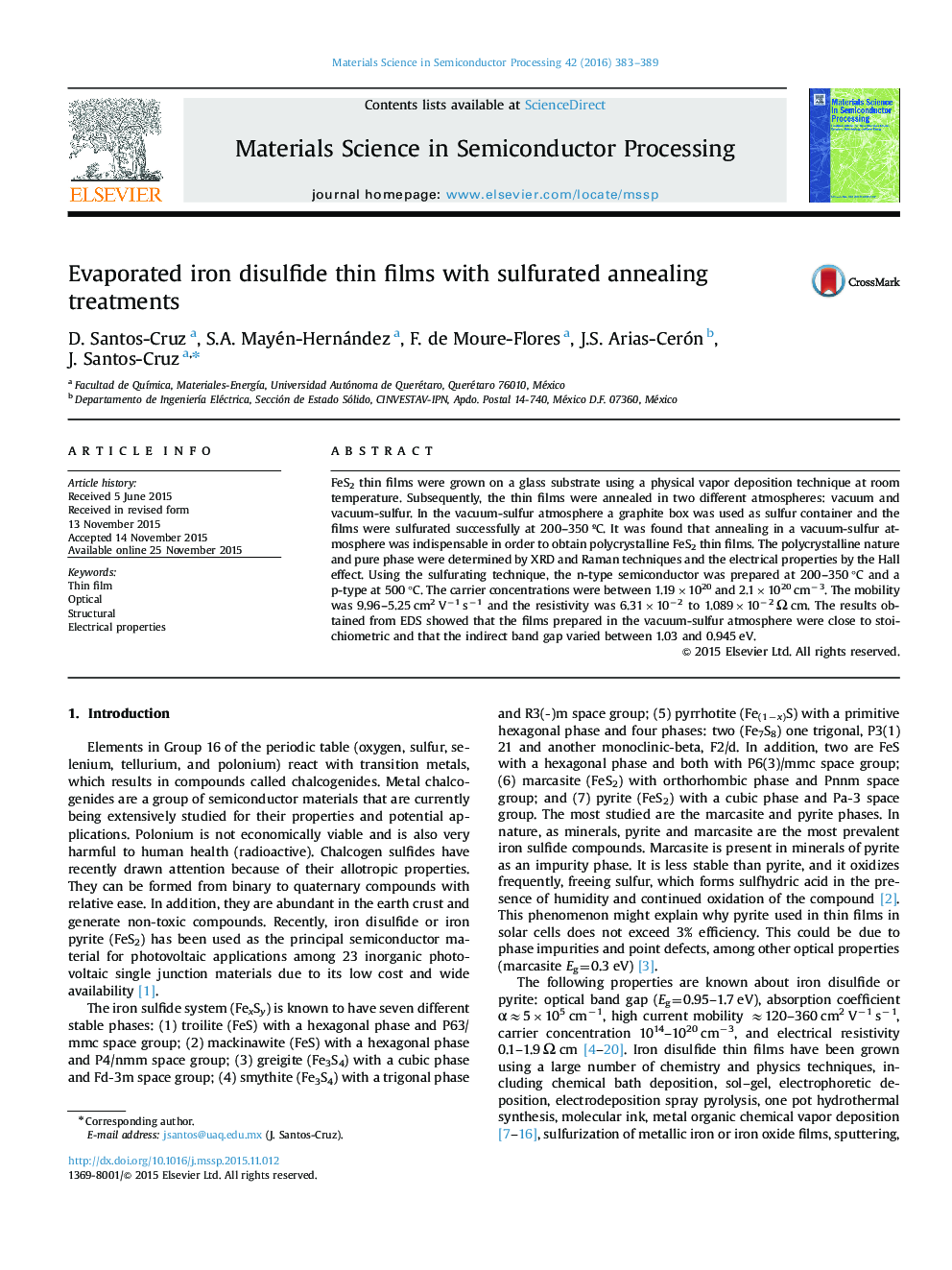| Article ID | Journal | Published Year | Pages | File Type |
|---|---|---|---|---|
| 726544 | Materials Science in Semiconductor Processing | 2016 | 7 Pages |
FeS2 thin films were grown on a glass substrate using a physical vapor deposition technique at room temperature. Subsequently, the thin films were annealed in two different atmospheres: vacuum and vacuum-sulfur. In the vacuum-sulfur atmosphere a graphite box was used as sulfur container and the films were sulfurated successfully at 200–350 ºC. It was found that annealing in a vacuum-sulfur atmosphere was indispensable in order to obtain polycrystalline FeS2 thin films. The polycrystalline nature and pure phase were determined by XRD and Raman techniques and the electrical properties by the Hall effect. Using the sulfurating technique, the n-type semiconductor was prepared at 200–350 °C and a p-type at 500 °C. The carrier concentrations were between 1.19×1020 and 2.1×1020 cm−3. The mobility was 9.96–5.25 cm2 V−1 s−1 and the resistivity was 6.31×10−2 to 1.089×10−2 Ω cm. The results obtained from EDS showed that the films prepared in the vacuum-sulfur atmosphere were close to stoichiometric and that the indirect band gap varied between 1.03 and 0.945 eV.
